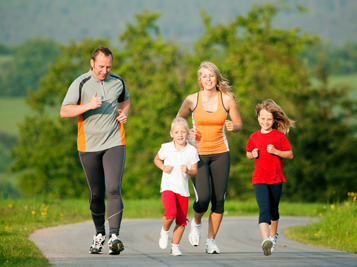Chatroom
Health maintenance and exercise
According to oxygen consumption patterns during exercise, they can be divided into aerobic and anaerobic exercise.
Brisk walking, jogging, aerobic dance, swimming, bike riding, and fitness instrument practicing such as treadmill, stationary bike and stepper, are all well-known aerobic exercise, of which requires longer exercise duration with moderate- to mild-intensity rhythmic movements. The energy required for these exercise programs is majorly provided through fat or sugar oxidation. Most of the muscles (2/3) in human body are involved during exercise: Mild- to moderate-intensity for 15-40 minutes or longer.
Long-term aerobic exercise can increase the level of hemoglobin, improve immunity, anti-ageing, enhance cardiopulmonary fitness, expedite fat oxidation, prevent arteries from becoming sclerosis, and reduce the incidence of cardiovascular diseases. The required intensity of aerobic exercise varies from person to person. The simple and effective calculation of intensity is as follows:

The 10-sec pulse rate after exercise multiply by 110% can be used to estimate the heart rate during exercise
- The exercise heart rate should be approximately 140 bpm/li>
- 120~135 bpm
- 100~120 bpm.
Energy consumption pyramid
- The1stlayer:Try to avoid watching TV, playing video games or sitting in front of computer
- The2ndlayer:Riding bicycles, swimming, aerobic exercise, playing basketball or playing tennis 3 days weekly (1 hour per day)
- The3rdlayer:Sit-up, yoga, mountain climbing and leisure activities 2~3 times weekly (for at least 20 minutes)
- The4thlayer:Climb stairs rather than taking the elevator, housekeeping, walking rather than driving
Relative to aerobic exercise, sprint running, weight lifting, throwing, high jump, long jump, tug-of-war and resistance training are aerobic exercise programs very popular in recent years, of which has extremely low oxygen consumption during exercise. Because rapid and powerful movements, blood glucose may not have sufficient time to be oxidized and thus only provide “Anaerobic energy supply”; i.e. high-speed and vigorous exercise under “Anaerobic” conditions. Therefore, most of the anaerobic exercise programs are powerful and instant exercise, which hard to persist for longer time. It also takes longer to relieve delayed onset muscle soreness (DOMS).

